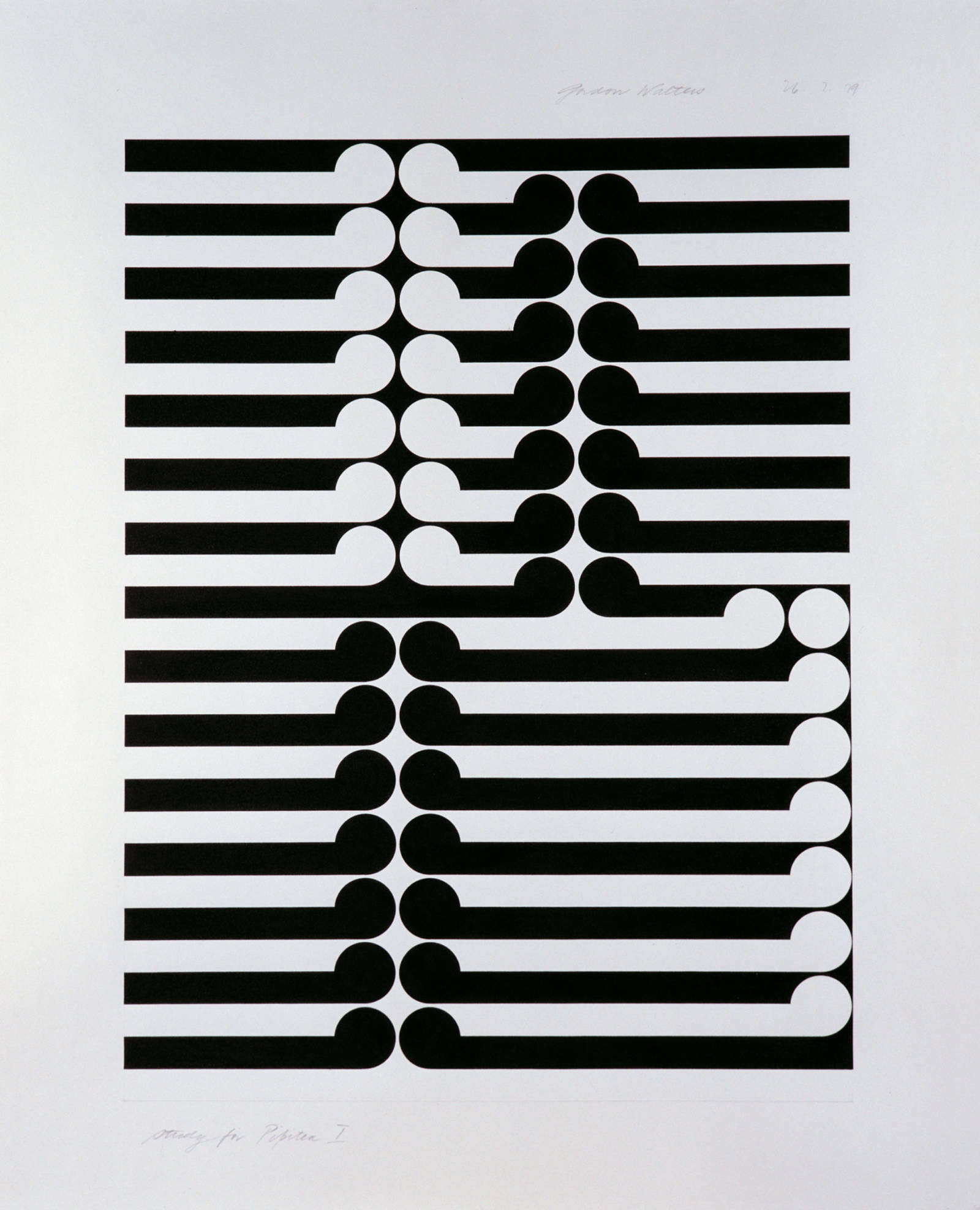WALTERS, Gordon;
Study for Pipitea I
26 July 1979
Ink on paper
780 x 585mm (sheet); 847 x 652mm (frame)

The following two texts were written for Te Huringa/Turning Points and reflect the curatorial approach taken for that exhibition.
Peter Shaw
Whether Gordon Walters ever made this study into a larger acrylic on canvas, as was his practice, is not known. Had he done so, the result would have been another fine work embodying the koru motif that had absorbed the artist since 1956.
In the wake of the 1992 exhibition Headlands: Thinking Through New Zealand Art at the Museum of Contemporary Art in Sydney, Walters found himself the central figure in a sometimes heated debate over his apparent appropriation of Māori imagery. The fact that many of his works had been titled, like this one, using Māori street names in Wellington, seemed to be evidence of the fact that Walters had in some way trivialised the koru.
In fact, Walters had always had the deepest respect for Māori culture, and his choice of the koru was deliberate. As designer and graphic artist for Te Ao Hou, the Māori arts and culture magazine, he knew deeply that what he was doing involved no disrespect. The proliferation of the koru in logos of all kinds, including that of Air New Zealand, makes nonsense of the precious objections of 1994.
Today, we can view these works for what they are: superbly crafted and visually exciting works of art that have a particular resonance for all New Zealanders.
Jo Diamond
Both the public display of artworks and art writing often attract critical comment, whether such criticism is constructive or not. Certainly, Walters’ work has caused much controversy, mostly regarding his appropriation of Māori symbols such as the koru. This work is included in Te Huringa/Turning Points not only to highlight the fact that such appropriations take place, but to also offer another view based on a re-appropriation of the koru form.
The primary basis for this is biculturalism, a dominating ideal in Aotearoa today. Study for Pipitea I, with its black and white complexity, symbolises convoluted and complicated cultural identity. Just as the koru concept in Māori art usually defies a simple straight-forward, black and white interpretation, so does this work.
If we re-appropriate the koru’s meaning from this painting, we may accept that cultural identity, and indeed cultural property, is never a straight-forward, uncomplicated affair. Biculturalism presumes that cultural partnerships rather than boundaries will be formed and that new pathways towards inter-cultural understanding and respect can be made. Although Walters may have purely delighted in this koru-based reference for his own particular reasons, we may permit ourselves the right to reclaim it in order to re-acknowledge its mana, especially in terms of its magnificent ability to symbolise mutual respect between Māori and Pākehā.
Inscriptions
Gordon Walters ; 26. 7. 79 [u.r.] Study for Pipitea I [l.l.]Exhibition History
Te Huringa/Turning Points: Pākehā Colonisation and Māori Empowerment, Sarjeant Gallery Te Whare o Rehua, Whanganui, 8 April to 16 July 2006 (toured)
Provenance
1981–
Challenge Collection (later Fletcher Trust Collection), purchased from McLeavey Gallery, Te Whanganui-a-Tara, 1981

